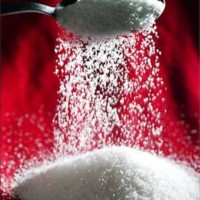
What I am about to tell you, will make people mad. It may start a nutrition community riot. Paleo diet lovers will come for my head.
I don’t care…
Elite Athletes: In order to develop faster, recover sooner and throw harder, you need to consume sugar.
I can see it now… Dr. Oz swinging down on a rope with a sword to cut my head off. “Noooo! Zach Not Sugar!”

The Dr. Oz
If you have read anything about nutrition, you have probably come across tons of anti – sugar rhetoric. Let me tell you the truth, ignore those guys. By the end of this post, you will see the light, and it’s a white, wonderful tasting powder….mmm Sugar!
Most people in the general public are trying to lose fat, and look better in a bikini. I get it. “Avoiding sugar” is easier than getting up and working out hard. If I was writing to the general public, avoiding food that is high in sugar content, is probably good general advice.
Here is the thing… You are not the general public. You are an elite athlete trying to reach your full genetic potential by optimizing you nutrient system. Say it to yourself, “I am not normal, I am elite.” Use that mindset before you read anything. Being an athlete, some general nutrition rules do not apply to you.
What Is Sugar Really?
Sugar is a carbohydrate. Carbohydrates primary function is to provide energy fuel for the body. Carbohydrates are a carbon and water based molecule. “Carbs” for short, vary in size and are plentiful in fruits and grains. There are many different types of carbohydrates. Simple sugars, such as glucose and fructose (monosaccharides) are much smaller. While a polysaccharides (a complex carbohydrate) is a long chain of monosaccharides. A monosaccharide is the most basic unit of carbohydrates. Polysaccharides can contain up to 26,000 simple sugars linked together. No matter the carbohydrates size, during the digestion process, carbs are broken down in the stomach and intestines to their smallest unit, typically glucose.
Glucose: What Is It? What Does It Do?
Glucose is being transported though your bloodstream to your muscles and other tissues where it is further broken down to produce energy. If glucose is not needed right away, it is stored in the muscle and liver in long chains called glycogen. There is a limit to the amount of glycogen your body can store. Once the glycogen stores are full, the extra glucose is converted to fat.
*You can see why so many people are bashing carbohydrates and sugary food. They fear the storage of fat. And rightfully so for some people.
But think about this for a minute, compared to athletes, how much energy does the average person require each day? Much Less! Most people work in an office and sit a chair for 8 hours. Meanwhile you already finished team practice and are on your way to the weight room. Next to an elite athlete like you, a normal working adult’s require much less energy . It does not even compare.
So again, don’t worry so much about your figure. You have different goals than the average human. Like throwing the baseball 93 miles per hour and pursuing your dream of the big leagues. Understand that accumulated fat is partly a function of replenished glycogen storage, and extra glucose. You should be working hard enough in your training, where glucose and glycogen levels need to be replenished. Being fat should not be an issue. Right?*
As an elite athlete, carbohydrates are required to maintain the energy for training. Carbohydrates also provide the essential fuel for the immune system. Limiting your carbohydrates can result in a weaker immune system. Colds and infections will hold you back from your training goals. Don’t let this happen.
Sugars Place On The Glycemic Index
Each food you consume has a different affect on your blood glucose levels. The index method of categorizing foods affect on your blood glucose level is called the glycemic index. Food high on the glycemic index will produce a quick spike in blood glucose that tapers off and declines quickly. While food low on the glycemic index will produce a mild sustained increase in glucose. See the below graph for a visual.
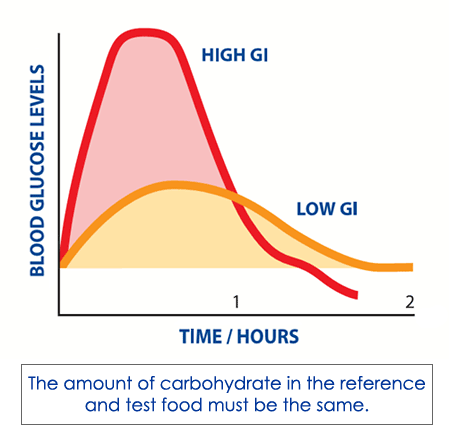
Image source: http://www.glycemicindex.com/
Hidden Benefits Of Sugar For Athletes
Sugar is high on the glycemic index. Sugar causes an immediate glucose spike in the bloodstream. This change in glucose level has a powerful effect on the release of insulin.
When the body senses more glucose in the bloodstream, the pancreases releases insulin into your bloodstream to aid in glucose uptake and glycogen formation. When insulin reaches a muscle cell, it signals that muscle cell to receive the glucose, amino acids and creatine from your bloodstream. Think of insulin like a key. It opens the gates to your cells to allow all the building blocks and fuel to do their work.
This insulin response helps to reduce cortisol levels and turn on cells anabolic systems. During this anabolic state, your body is most susceptible and responsive to nutrient intervention. With the added appropriate ratio of protein, you can take advantage of this high glycemic carbohydrate’s (sugar) fast acting nature and provide the quick glucose spike needed to induce greater insulin response for muscle creation, recovery and muscle damage reduction.
In turn you reach your training goals faster. Yes, I just said it, eating sugar, can help your throw harder.
Gasp!
Studies: Proof
There has been many studies proving the effect of insulin on protein synthesis (the creation of new muscle). Penn State University Medical School researchers found that insulin stimulated ribosomes (cellular machinery) involved in the creation of muscle protein. In a different study, researchers from the University of Texas Health Science Center in Galveston found that, after an insulin infusion, new muscle creation (protein synthesis) in the muscle cell increased by approximately 67 percent.
I took advantage of this insulin response to glucose right after workouts. This recovery tool, aided my fastball increase from 90 mph to 95 mph in less than a year. When you take your nutrient intervention serious. Big things happen. You accomplish performance goals you never thought possible. I want this for you.
We talk about insulin a lot in the Throw Cheese Nutrient System. Here is an example of a normal insulin response without nutrient intervention:
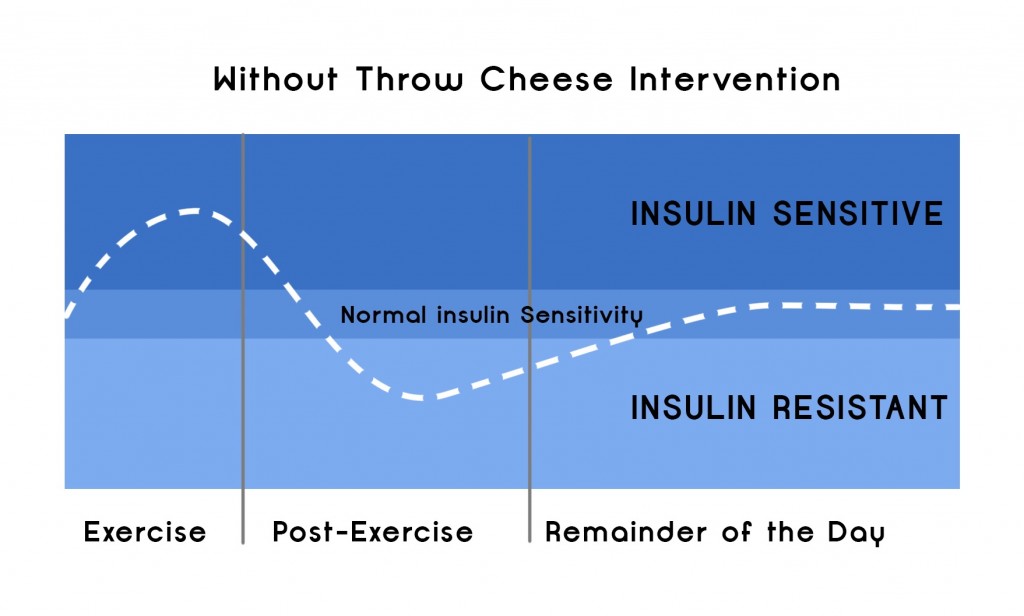
Insulin’s Bad Reputation
Insulin promotes fat syntheses and decreases fat breakdown when your body is in a certain circumstance. Over a long period of time, high insulin levels and buildup of body fat have been linked to type 2 diabetes. This is true and scary for a lot of people out there. But keep in mind. The sensitivity of your fat cells to insulin to store fat, is highly dependent on your bodies anabolic state.
The degree at which insulin promotes fat storage, or carbohydrate storage, or protein syntheses depends on which cells are sensitive to the insulin. Different cells (muscle cells or fat cells etc.) are sensitive to insulin based on the timing of your nutrients in regards to when your body was stressed during training. We detail this very important, nutrition time sensitive characteristic, in the Throw Cheese Nutrient System. The timing and effectiveness of your nutrient intervention has a huge effect on your hormonal and biochemical response to workouts. An elite athlete muscle cells responds positively to insulin, especially right after your workout.
Sugar All Day? Hooray! Hold On Bro…
Right after your workouts your muscle cells are the most sensitive to insulin and glucose. There is a 15 to 45 minute window that your body in starving for nutrient intervention. During this time you need to consume a protein/carbohydrate beverage. The carbohydrate I want you to consume is sugar. This will “open” the gates for amino acids, creatine and glucose for new muscle creation, limit muscle damage and blunt negative hormone response from training. The ratio of carbohydrates to protein is 3/1 or 4/1 carbohydrates to protein. For a post-workout supplementation, a 200 pound athlete should consume approximately 15 – 20 grams of whey protein and 50 – 60 grams of high-glycemic carbohydrates (dextrose) immediately after training.
More precise calculation of your pre-training, during training and post training nutrition is laid out in the Throw Cheese Nutrient System program. It depends on your weight and performance goals. Keep in mind, carbohydrates are complimentary to protein in training recovery and strength gains. Immediately following your workout, is the “Prime time” to get protein/carbohydrates into your system. The faster the better!
The below graph shows a large anabolic difference when nutrient intervention takes place.
From the Throw Cheese Nutrient System:
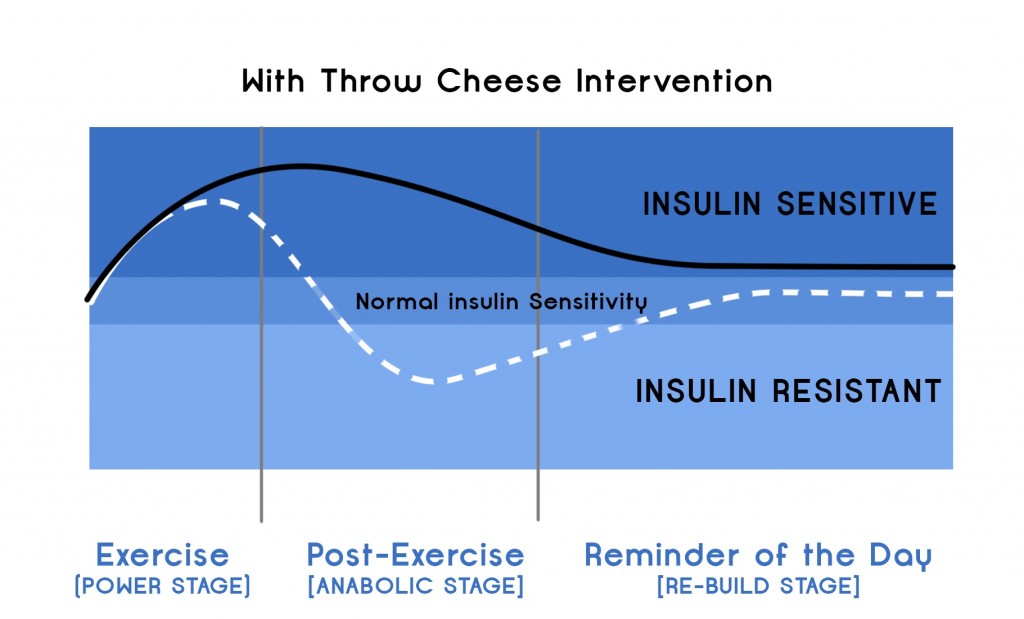
What kind of Sugar?
Not all sugars are a strong simulator or insulin. Avoid products with high fructose or galactose. For example, many fruits (bananas, apples, citrus fruits ) and all vegetables (asparagus, artichoke, beans, broccoli) contain high fructose levels. They are not ideal immediately after your workout (Plus they are slower to digest). Strong insulin driving carbohydrates include sucrose, maltodextrin and dextrose.
Time To Be a Sugar Daddy
I prefer the carbohydrate dextrose. It is derived entirely from corn, making it natural, effective, and easily utilized by the body. Click here to order a low price 10 pound container. You can scoop this into your shaker along-side your whey protein.
Click Here To Buy Dextrose Right Now, like you should.
My Doubts Destroyed
To be honest, when I first thought about dextrose as a positive supplement for an elite athlete, I was skeptical. But at a low cost to try, and the science in my mind, I gave it a shot. The results were incredible. I felt like a beast throwing the baseball. And I recovered faster than anyone else. Who knew that glucose was the catalyst driver of insulin that initiated the anabolic state to gain more muscle, more strength, recover faster, and throw harder? I did. And now you know too.
“They Said You Are Crazy?”
When people start to call you crazy, you know you are on the right path. Today is a great day to buy some dextrose and place right next to your protein powder.
Go get better today!
-Zach

PS: Share this with someone who hates sugar:
PSS: What do you think? Was this article helpful? Comment below and share with your friends
Reference:
Gleeson, M., Lancaster, G.I., and Bishop, N.C., “Nutritional strategies to minimize exercise induced Immuno suppression in athletes,” Canadian Journal of Applied Physiology, 26(Suppl):S23-S35, 2001. Levenhagen, D.K., Carr, C., Carlson, M.G., et al., “Post exercise protein intake enhances whole-body and leg protein accretion in humans,” Medicine and Science in Sports and Exercise, 34:828-837, 2002. Ivy, J.L., Katz, A.L., Cutler, C.L., et al., “Muscle glycogen synthesis after exercise: effect of time on carbohydrate ingestion,” Journal of Applied Physiology, 64:1480-1485, 1988. Ivy, J.L., “Dietary strategies to promote glycogen synthesis after exercise,” Canadian Journal of Applied Physiology, 26(Suppl):S236-S245, 2001. Suzuki, M., Doi, T., Lee, S.J., et al., “Effect of meal timing after resistance exercise on hind limb muscle mass and fat accumulation in trained rats,” Journal of Nutritional Science and Vitaminology, 45:401-409, 1999. Disclaimer: Always consult a medical professional before taking any nutrition supplements.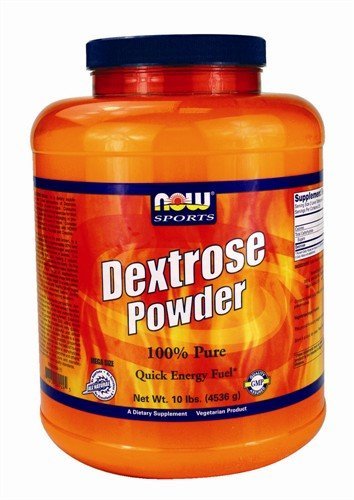





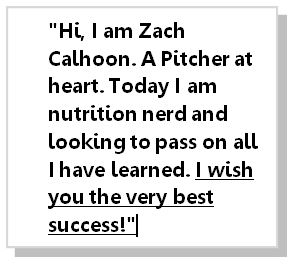


Leave A Reply (No comments so far)
No comments yet